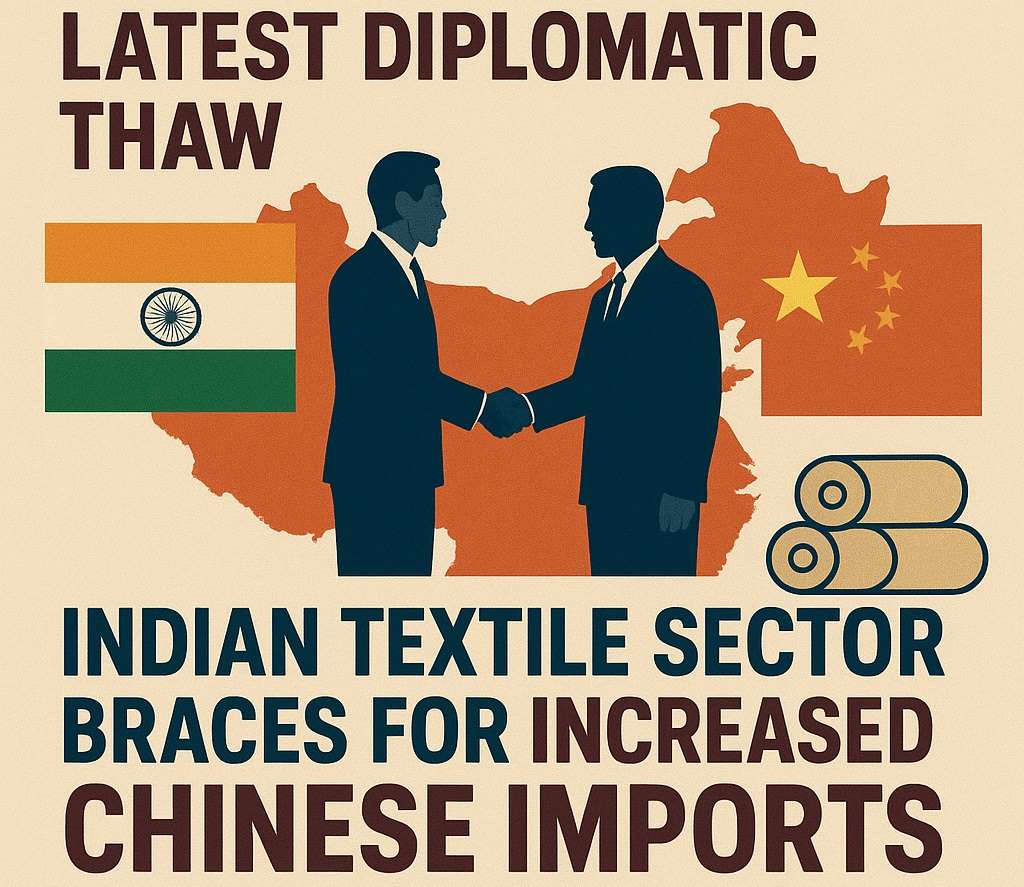
Following high-level diplomatic engagements between Indian External Affairs Minister S. Jaishankar and Chinese Foreign Minister Wang Yi, a new chapter appears to be opening in the India-China trade relationship. While a basic summary of the meeting points to a renewed focus on dialogue to ease border tensions, the most concrete outcome on the trade front has been China's decision to lift export restrictions on key commodities, including rare earth magnets and fertilizers.
This strategic shift is being closely watched by India's textile and apparel sector, where analysis indicates that while there may be some benefits, the most likely outcome is a further increase in imports from China, particularly of raw materials and machinery.
The Economic Reality: Increased imports are likely
The fundamental reason for this lies in the sheer scale and efficiency of China's textile industry, which far surpasses India's. This dominance creates a trade dynamic where India relies heavily on China for crucial inputs, a reliance that is only set to deepen with the lifting of export curbs.
Key imports from China for Indian textiles
|
Category |
Old Scenario (Restrictions) |
New Scenario (Easing) |
Likely Impact on Imports |
|
Machinery Components |
Supply Chain Disruptions |
Smoother Access, Less Downtime |
Increased. Indian manufacturers will import more to upgrade technology and ensure production stability. |
|
DAP Fertilizers |
Price Volatility, Scarcity |
Improved Supply, Cost Stabilization |
Increased. Cheaper and more reliable access to fertilizers will boost cotton yields, but imports will likely rise to meet agricultural demand. |
|
Raw Materials (Yarn, Dyes) |
Volatile Supply, Higher Costs |
Potential for Stable Supply and Lower Costs |
Increased. Lower costs and stable supply will make Chinese inputs more attractive, further cementing reliance. |
|
Finished Goods |
Competition and Trade Barriers |
Potential for Eased Access, Cheaper Goods |
Increased. China's scale advantage means it can flood the Indian market with cheaper finished products. |
This dynamic is already reflected in the significant trade deficit that India maintains with China in the textile and apparel sector.
|
Category |
India Imports from China (USD Billion) |
India Exports to China (USD Billion) |
|
Textiles & Articles |
3.5 |
0.8 |
|
Raw Materials (Yarn) |
1.2 |
0.1 |
|
Garments & Accessories |
0.8 |
0.3 |
|
Total |
5.5 |
1.2 |
Source: Ministry of Commerce and Industry, Government of India (latest available data, FY 2022-23)
The bilateral trade reality and the case for caution
While the new developments could help Indian textile manufacturers become more price-competitive in the global market, particularly in Western countries that are seeking to diversify their supply chains, the direct bilateral trade with China remains a significant challenge. Analysts argue that with its colossal production capacity, China is in a prime position to increase its exports of cheaper finished goods to India. This could exacerbate the existing trade surplus and pose a direct threat to India's domestic manufacturing base.
Tirupur and Surat industries’ heavy import dependence on China
The knitwear cluster in Tirupur and the synthetic textile industry in Surat both rely heavily on raw material imports from China. The recent developments could indeed stabilize their supply chains for inputs like yarns and dyes. However, this same opening exposes them to fierce competition from cheaper Chinese finished goods. This underscores a crucial point: the lifting of restrictions benefits India's ability to produce competitively for global markets but does not inherently provide an advantage for exporting finished goods directly to the Chinese market. Instead, it makes the Indian market a more attractive destination for China's products.
Diplomatic thaw, a double-edged sword for India's textile sector
The recent diplomatic thaw and the lifting of China's export restrictions, while seemingly beneficial, are a double-edged sword for India's textile sector. The likely outcome is a deeper reliance on Chinese raw materials and machinery, leading to an increase in imports. This, coupled with China's superior scale, could allow it to further dominate the Indian market with cheaper finished goods. While the developments offer an opportunity for India to strengthen its domestic production for global export, the challenge of a significant trade imbalance with China remains a complex and critical issue that requires strategic long-term planning.












